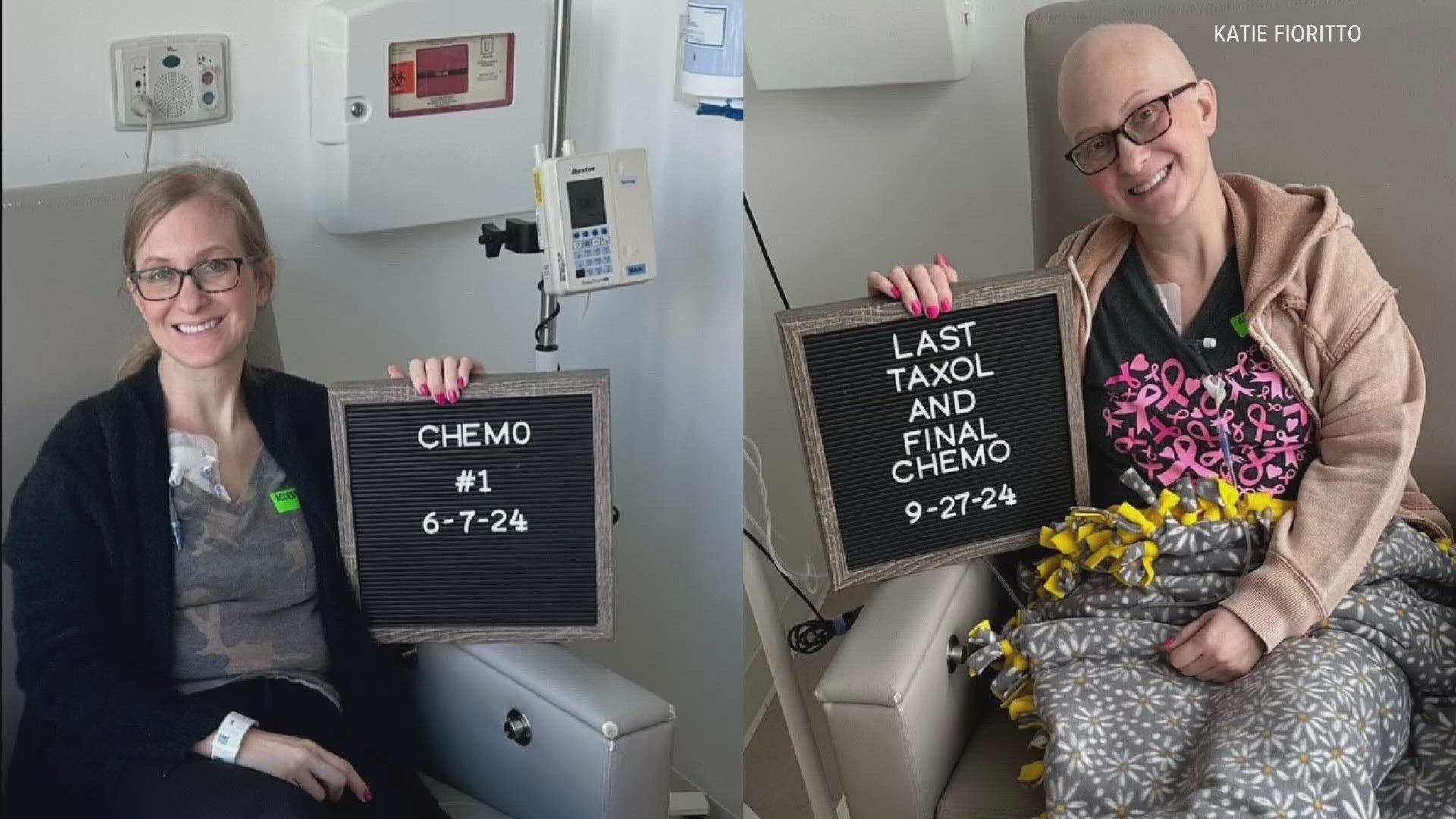CLEVELAND — October 15th is Lobular Breast Cancer Awareness day. Important for a type of invasive breast cancer that is often difficult to find on a mammogram.
Today is also the day 37-year-old Katie Fioritto began her radiation treatments to battle LBC. It's the last part of her aggressive treatment after going through a double mastectomy and chemotherapy.
She's the youngest of seven, but fourth in the family to battle breast cancer.
"My mother also had breast cancer in her seventies and hers was lobular. But my two sisters that have recently had breast cancer both had ductal carcinoma, which is the most common type of breast cancer," Katie said.
As a nurse, she understood what her family members went through and she also understood her risk, but she never imagined she would be dealing with a breast cancer diagnosis at such a young age.
"It sounds crazy to say this, but without their diagnosis, I probably wouldn't have gotten in for that high risk screening or been as prudent about checking, doing self breast exams and that sort of thing. So, in a way a, I feel like it probably saved my life because without that, I'm not sure where I would have been," Katie said.
She encourages people to be their own health advocates. The first thing she did was research to find an expert with this type of cancer. or would have been, you know, looking for it.
"One of the first things I came across was lobularbreastcancer.org and that is a website that is made by the Lobular Breast Cancer Alliance, which is a group of patient advocates, clinicians and researchers. On the scientific advisory board are all physicians who specialize in lobular breast cancer, and one of those physicians is Dr. Megan Kruse at the Cleveland Clinic," Katie said.
"What's tough about lobular breast cancer is while it can show up on a mammogram, it doesn't always, it can be kind of tricky to find on mammogram. And part of the reason for that is these cells rather than growing as like a solid ball of cancer, they can actually grow in these single file lines. Sometimes inside the breast tissue, they'll actually look like a spider web or ivy," Dr. Kruse said.
And despite Katie's family history there was no genetic abnormality discovered.
"Now, that doesn't mean it's not familial or there's not some risk that it goes along with it that runs in a family because sometimes science just doesn't know what those genetic changes are yet and we'll find them over time, especially in a family like Katie's where there's such a strong link," Dr. Kruse said.
Typically at risk women are better suited to have an MRI rather than mammograms because the cancer is more easily detected. Katie hopes women learn from her story and understand that there are different types of breast cancer.
"You only have this one body and so this is what you have to live with and so taking care of it is very important," Katie said.
According to the Lobular Breast Cancer Alliance, Invasive lobular carcinoma (ILC), also known as lobular breast cancer, is 15% of all breast cancer diagnosis and the sixth most frequently diagnosed cancer of women in the US with over 46,000 new patients diagnosed each year.
ILC was not officially understood to be the distinct breast cancer subtype that it is until 2015. It is also not a rare cancer. ILC is the second most common breast cancer histologic subtype of breast cancer. Unfortunately, it is still not well understood.
One of the most unique features of most ILC tumors is the absence of the protein E-cadherin and the fact that ILC tumors do not usually form a lump. This makes it much harder to detect with screening, advanced imaging, and self-exams. It is important to know the signs of ILC and report breast changes to your health care provider.

